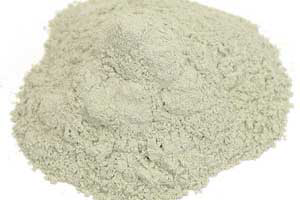Research: Clays help detoxifying for zearalenone

Scientists of Dankook University in South Korea in cooperation with Amlan International studied the effects of montmorillonite clay on growth performance, nutrient digestibility, vulva size, faecal microflora, and oxidative stress in weaning gilts challenged with zearalenone.
Two experiments were conducted to evaluate the effects of montmorillonite clay (MC) on performance and nutrient digestibility of pigs challenged with zearalenone (ZEA).
In experiment 1,144 gilts (10 kg) were assigned to 1 of 8 treatments in 2×4 factorial randomized complete block design for a 28 d trial (6 pigs/pen, 3 pens/treatment).
Factors included:
(1) ZEA levels (0, 0.2, 0.4, or 0.8 mg ZEA/kg) and
(2) MC addition [Clay to ZEA ratio maintained at 2500:1 (w:w)].
These diets included:
(1) control,
(2) control + 2 g MC/kg,
(3) control + 0.2 mg ZEA/kg,
(4) control + 0.2 mg ZEA/kg + 0.5 g MC/kg,
(5) control + 0.4 mg ZEA/kg,
(6) control + 0.4 mg ZEA/kg + 1 g MC/kg,
(7) control + 0.8 mg ZEA/kg, and
(8) control + 0.8 mg ZEA/kg + 2 g MC/kg.
Results
The ZEA challenges were shown to linearly depress average daily gain (ADG) and feed efficiency, but the addition of MC improved feed efficiency in the overall phase.
Coefficient of apparent total tract digestibility of dry matter and nitrogen decreased as the ZEA levels increased and nitrogen digestibility were improved by MC supplementation.
Zearalenone linearly increased vulva size (width, length, and area). Addition of MC reduced average vulva width and area.
Faecal Lactobacillus counts were increased and Escherichia coli were reduced in the MC supplemented treatments at 2 and 4 wk regardless of the level of the MC.
Serum malondialdehyde (MDA) concentration increased (linear effect at 2 and 4 wk) and total superoxide dismutase (SOD) and aspartate amino transferase (AST) activities decreased (linear effect at 4 wk,) as dietary ZEA dosage increased; MC supplementation reversed these effects.
Experiment 2
In experiment 2, 64 pigs (27 kg) that were pre-fed ZEA treatments (0, 0.2, 0.4, or 0.8 mg ZEA/kg) for 28 d in experiment 1, were randomly divided into two halves and fed either control diet or control + 2 g MC/kg for 18 d (2 gilts/pen, 4 pens/treatment).
Adding 2 g MC/kg increased ADG, and decrease the vulva size and serum MAD concentration in pigs pre-fed ZEA diets throughout the 18 d period.
Serum SOD concentration increased in those pigs fed MC on d 9.
Conclusion
The results suggest that feeding low levels of ZEA reduced nutrient digestibility, increased oxidative stress, and negatively affected pigs’ growth, and montmorillonite clay was beneficial for detoxification of ZEA in pigs under and after ZEA challenge.












